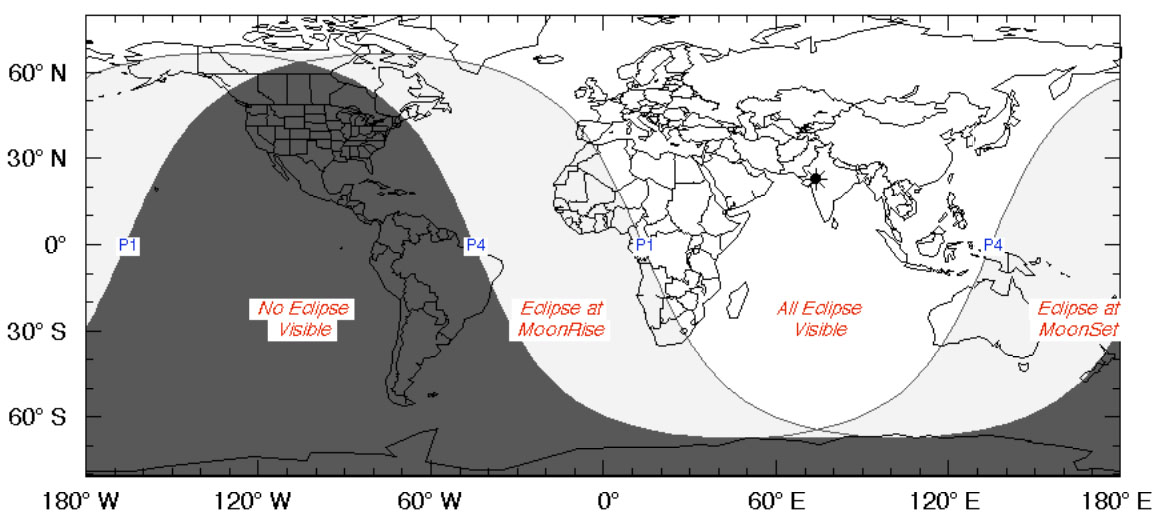The Wolf Moon Lunar Eclipse of 2020 Occurs Today: How to Watch Online
Update for 6 p.m. EST: The first lunar eclipse of 2020 has ended. You can see our full wrap story here, complete with stunning photos by Space.com readers here!
The first full moon of the year rises today (Jan. 10) bringing with it the first lunar eclipse of 2020 and you can watch the event live online.
As eclipses of the moon go, today's Wolf Moon lunar eclipse will be a relatively minor one. The moon will pass behind the Earth, with respect to the sun, dipping through the outermost edge of our planet's shadow in what scientists call a penumbral lunar eclipse.
The eclipse will be visible primarily from the Eastern Hemisphere, with countries in Europe, Africa and much of Asia in prime viewing position. It will begin at 12:07 p.m. EST (1707 GMT), peak at 2:10 p.m. EST (1910 GMT) and end at 4:12 p.m. EST (2112 GMT).
If you don't live in the visibility area, there are several webcasts available from the Slooh online observatory, Virtual Telescope Project and night sky site CosmoSapiens for you to choose from. You'll be able to watch some webcasts live on Space.com here. Here's a guide to those Wolf Moon lunar eclipse webcast.
Related: Lunar Eclipse 2020 Guide: When, Where & How to See Them
More: How Lunar Eclipses Work (Infographic)
Slooh webcast
The stand-out eclipse webcast to watch will be from the Slooh online observatory, which will offer live views of the eclipse from its remotely operated observatories and partners from 2:30 p.m. EST (1930 GMT) to 4:15 p.m. EST (2115 GMT). Slooh has a network of telescopes around the world, so cloudy weather at one site will not affect the webcast.
Breaking space news, the latest updates on rocket launches, skywatching events and more!
You can watch the webcast live on Space.com here, and directly from Slooh here.
The webcast will cover the main portion of the eclipse and be hosted by Slooh chief astronomical officer Paul Cox.
According to Slooh, "our team of experts will discuss what makes this type of lunar eclipse the most subtle of all eclipses - difficult to see with naked eyes, but visible using Slooh's telescopes as we watch the moon darken slightly as it passes into Earth's outer penumbral shadow."
Viewers can also share views of the eclipse with friends online using Slooh's StarShare camera, the observatory said.
Slooh offers its members access to a fleet of remotely operated telescopes around the world to capture stunning views of the night sky and deep-space objects. 2020 marks the observatory's 17th anniversary.
Virtual Telescope Project
Astrophyscisist Gianluca Masi of the Virtual Telescope Project in Italy will host a live Wolf Moon lunar eclipse webcast from 12 p.m. EST (1700 GMT). You can watch it directly from the Virtual Telescope Project here.
Masi will show views of the penumbral lunar eclipse from Rome, weather permitting.
"We will share with you live, online, the beauty of this natural event," Masi wrote in an announcement. "Our live feed will show the eclipsed moon above the epic skyline of Rome, the Eternal City."
CosmoSapiens
The night sky webcast site CosmoSapiens will offer a live view of the Wolf Moon lunar eclipse beginning at 12 p.m. EST (1700 GMT).
While CosmoSapiens will be webcasting the event on YouTube, the site does not state the location of its viewing cameras.
TimeandDate.com
The website TimeandDate.com regularly hosts live video streams of the sky events from around the world. While the site has not listed a specific webcast for the Wolf Moon lunar eclipse, it may be worth visiting the TimeandDate.com live video stream page here just in case during the eclipse hours of 12 p.m. EST and 4:15 p.m. EST (1700 and 2115 GMT).
TimeandDate.com also has a series of eclipse animations and maps available here for the event.
Here's a list of key times for tonight's Wolf Moon lunar eclipse as explained by Space.com columnist Joe Rao in his guide.
| Eclipse begins | 12:07 p.m. EST (1707 GMT) |
| Mid-eclipse | 2:10 p.m. EST (1910 GMT) |
| Eclipse ends | 4:12 p.m. EST (2112 GMT) |
We'll see three more penumbral lunar eclipses in 2020, on June 5, July 5 and Nov. 30.
Editor's note: If you capture an amazing photo of the lunar eclipse and would like to share it with Space.com for a story or gallery, send images and comments to managing editor Tariq Malik at spacephotos@space.com.
- In Photos: The Snow Moon Lunar Eclipse & Comet 45P Close Encounter
- 'Ring of Fire' Solar Eclipse Thrills Skywatchers Around the World (and in Space, Too!)
- How to Catch the Next Eclipse: A List of Solar and Lunar Eclipses in 2020 and Beyond
Email Tariq Malik at tmalik@space.com or follow him @tariqjmalik. Follow us @Spacedotcom, Facebook and Instagram.


Tariq is the award-winning Editor-in-Chief of Space.com and joined the team in 2001. He covers human spaceflight, as well as skywatching and entertainment. He became Space.com's Editor-in-Chief in 2019. Before joining Space.com, Tariq was a staff reporter for The Los Angeles Times covering education and city beats in La Habra, Fullerton and Huntington Beach. He's a recipient of the 2022 Harry Kolcum Award for excellence in space reporting and the 2025 Space Pioneer Award from the National Space Society. He is an Eagle Scout and Space Camp alum with journalism degrees from the USC and NYU. You can find Tariq at Space.com and as the co-host to the This Week In Space podcast on the TWiT network. To see his latest project, you can follow Tariq on Twitter @tariqjmalik.




